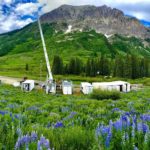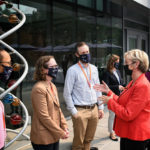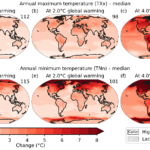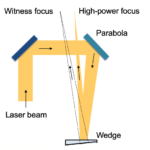Five-year, $12.5 million U.S. Department of Energy project will help pave the way for a nationwide quantum Internet
Latest News
ABPDU Celebrates a Decade of Bio-Innovation
-By Emily Scott Ten years ago, Lawrence Berkeley National Laboratory announced the opening of a brand new, 15,000-square-foot facility full of stainless steel state-of-the-art bioprocessing equipment – what we now know as the Advanced Biofuels and Bioproducts Process Development Unit, or ABPDU, was officially open for business. Funded by the U.S. Department of Energy’s Bioenergy
LED Material Shines Under Strain
With a simple stretch, a thin semiconductor material can achieve near 100% light-emission efficiency at all brightness levels. The discovery, reported by scientists at Berkeley Lab and UC Berkeley in the journal Science, has implications for energy-efficient mobile devices and lighting applications.
Mountains of Data: An Unprecedented Climate Observatory to Understand the Future of Water
Mountain watersheds provide 60 to 90% of water resources worldwide, but there is still much that scientists don’t know about the physical processes and interactions that affect hydrology in these ecosystems. And thus, the best Earth system computer models struggle to predict the timing and availability of water resources emanating from mountains. Now a team of scientists led by Lawrence Berkeley National Laboratory (Berkeley Lab) aims to plug that gap, with an ambitious campaign to collect a vast array of measurements that will allow scientists to better understand the future of water in the West.
Energy Secretary Jennifer Granholm visits Berkeley Lab
U.S. Energy Secretary Jennifer Granholm visited the Bay Area on Friday, Aug. 20, making a two-hour stop at Lawrence Berkeley National Laboratory for discussions with Lab scientists and leaders and tours of two of the Lab’s five national scientific user facilities.
This Exotic Particle Had an Out-of-Body Experience; These Scientists Took a Picture of It
Scientists at Berkeley Lab and UC Berkeley have taken the clearest picture yet of electronic particles that make up a mysterious magnetic state called quantum spin liquid. The achievement could facilitate the development of superfast quantum computers and energy-efficient superconductors.
Latest IPCC Report Points to Urgent Need to Cut Emissions
Our planet’s oceans, forests, and soils perform a valuable service, absorbing half of our carbon dioxide emissions. But the more that our planet warms, the more that these so-called “carbon sinks” weaken in their ability to perform this service. If we continue on our current trajectory of high emissions of greenhouse gases, by the next century not only will oceans and forests absorb less carbon dioxide, they could even reverse their role and become carbon sources.
Scientific Publishing Organizations and National Laboratories Partner on Transgender-Inclusive Name-Change Process for Published Papers
All seventeen U.S. national laboratories and many prominent publishers, journals, and other organizations in scientific publishing announced today the beginning of a partnership to support name change requests from researchers on past published papers. Lawrence Berkeley National Laboratory (Berkeley Lab) is coordinating the effort. This agreement will allow researchers who wish to change their names
Berkeley Lab Optical Innovation Could Calm the Jitters of High-Power Lasers
The Berkeley Lab Laser Accelerator (BELLA) Center at Lawrence Berkeley National Laboratory has developed and tested an innovative optical system to precisely measure and control the position and pointing angle of high-power laser beams with unprecedented accuracy
Main Attraction: Scientists Create World’s Thinnest Magnet
Scientists at Berkeley Lab and UC Berkeley have created a one-atom thin magnet that operates at room temperature. The ultrathin magnet could lead to new applications in computing and electronics, and new tools for the study of quantum physics.












